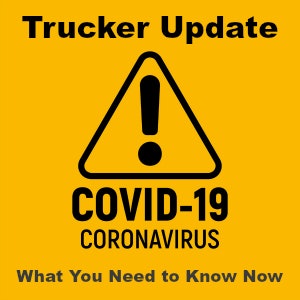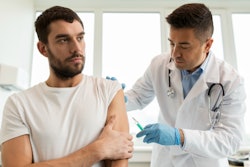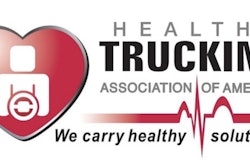
With COVID-19 coronavirus cases increasing again, more and more states and communities are taking extra measures to stop the spread of the disease that has claimed more than 244,000 American lives. And, as of this morning, some 10.8 million people in the U.S. have been infected with COVID-19.
North Dakota, New Mexico, and Oregon have all enacted measures to try to slow the spread of the virus. More states are expected to follow.

Here’s what the CDC posted on its website:
As a long-haul truck driver, you spend many hours alone in the cab of your truck. However, there are times when you will be at increased risk of exposure to COVID-19. For long-haul truck drivers, potential sources of exposure include having close contact with truck stop attendants, store workers, dock workers, other truck drivers, or others with COVID-19, and touching your nose, mouth, or eyes after contacting surfaces touched or handled by a person with COVID-19.
- Notify your supervisor and stay home if having symptoms.
- Make a plan with your employer and your family as to what to do if you become sick while you’re on the road. Include where to stop, where and how to seek medical advice and treatment, and plans for freight delivery.
- Follow CDC-recommended steps if you are sick. You should not return to work until the criteria to discontinue home isolation are met, in consultation with healthcare providers and state and local health departments.
- Follow CDC recommended precautions and notify your supervisor if you are well but have a sick family member at home with COVID-19.
- Limit close contact with others by maintaining a distance of at least 6 feet when possible.
- Limit time spent outside of the truck cab during fueling, loading and unloading, and at rest and truck stops.
- Use paperless, electronic invoicing for fueling, deliveries, and other tasks, when available.
- Contact facilities in advance to make an appointment for unloading of cargo. Be aware that some facilities may not grant access to restrooms, and plan as best you can.
- Use radio/phone to talk with dock managers or other drivers, if possible.
- Pack food, water, and supplies to limit the number of stops.
- Avoid shaking hands.
- Keep your truck well-ventilated.
- CDC recommends wearing cloth face coverings in public settings where other social distancing measures are difficult to maintain, especially in areas of significant community-based transmission. Cloth face coverings may prevent people who don’t know they have the virus from transmitting it to others. These face coverings are not surgical masks or respirators and are not appropriate substitutes for them in workplaces where masks or respirators are recommended or required.
- Clean and disinfect frequently touched surfaces on a routine basis such as:
- In the truck cab (driver door handle, steering wheel, seat belt and buckle, arm and head rest, seat cover, turn signal, wiper controls, dashboard, air ducts, radio, and temperature controls).
- In the sleeper berth (light switches, mattress tray, temperature controls, and other flat surfaces).
- If a third party must have access to the interior of your truck (for example., mechanics, other drivers, inspectors), request that the third party clean and disinfect the truck before turning it back over to you.
- For disinfection, use products that meet EPA’s criteria for use against SARS-CoV-2external icon, diluted household bleach solutions, or alcohol solutions with at least 70% alcohol, and are appropriate for the surface. Follow manufacturer’s directions for use and clean hands afterwards; more detailed cleaning and disinfecting guidance is also availableexternal icon.
- Practice proper hand hygiene. This is an important infection control measure. Wash your hands regularly with soap and water for at least 20 seconds, or use an alcohol-based hand sanitizer containing at least 60% alcohol.
- Key times to clean hands include:
- Before entering and leaving the cab, including deliveries, loading and unloading of cargo, rest breaks, fueling, and other activities;
- Before eating or preparing food;
- After putting on, touching, or removing cloth face coverings;
- After blowing your nose, coughing, or sneezing;
- After using the restroom.
- Key times to clean hands include:
- Avoid touching surfaces often touched by others when outside of the cab.
- Do not share personal protective equipment (PPE) (such as vests, safety glasses, hard hats), tools, phones, radios, or other personal items.
- Use pre-qualified truck stops or hotels identified by your employer as having appropriate COVID-19 protections.
- Continue to comply with current Federal Motor Carrier Safety Administrationexternal icon (FMCSA) regulations.
- Get adequate sleep (7–9 hours) prior to driving. This is critical even when essential supplies and equipment are being transported.
- Pull over, drink a cup of coffee. or take a 15–30 minute nap before continuing if you feel fatigued while driving.
- When team driving or ride-alongs are required, wear cloth face coverings inside the truck and avoid sharing bedding in the sleeper berth.
- If any directive from your employer or a shipper is unclear, ask questions.








